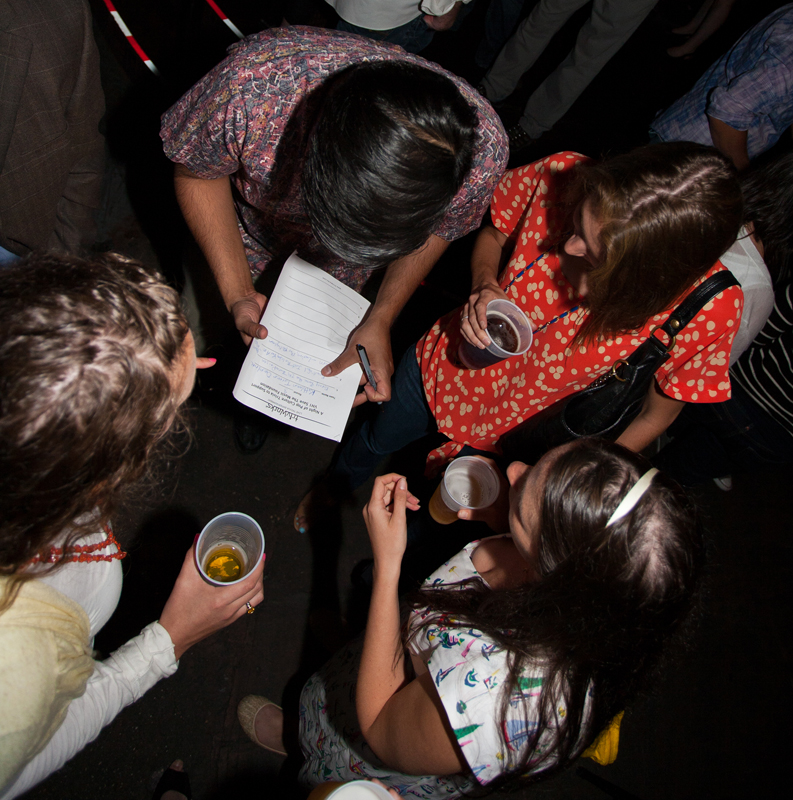How Do You Create Team Building Activities for Highly Diverse Groups?
 Team building activities NYC diverse groups
Team building activities NYC diverse groups
Earlier this week, we had the honor of producing a trivia event for employees of the United Nations Children’s Fund (UNICEF), the prestigious UN program that provides assistance to children and mothers living in developing countries across the globe. Next week, we are producing an event for Dalberg Global Development, a strategy and policy advisement firm with a mission surrounding global economic development and social empowerment.
These two groups have a lot of similarities: they are coming from social welfare organizations, are being brought together as part of multi-day retreats, and seek to have an engaging and fun group bonding experience in New York City. But something else which they both have in common which as a professional event planner I can’t ignore: both groups are highly diverse.
Just how diverse? Take for example the UNICEF group we entertained – there were about 70 people, hailing from 34 countries of origin, speaking 20 native languages. Clearly these folks have a lot of similarities with respect to values and career choice, and when planning NYC team building events, the differences in where they are coming from cannot be overlooked.
In my case as a NYC professional trivia host and event producer, the fact that a group will be globally mixed sets off a variety of reactions. First, I know that we CANNOT make the event too American-centric, especially with regards to pop culture. Trust me, the temptation is there – especially if the group is young and hip, I’d love to ask them questions about TV, movies, celebrity news etc. But the fact is, people who grew up in different parts of the word do NOT share similar experiences with pop culture; if you’ve got people in the room from Latin America, Africa, Eastern Europe, Western Europe and South Asia, you can’t possibly expect them all to have had exposure to the same things, let alone have it readily on the tips of their tongues.
So that’s lesson #1: make sure the content is appropriate for the audience. I’ve used the international example, however this also goes for other forms of diversity. Very often, groups seeking an engaging and interactive team experience have a wide age range as well – new hires in their early 20s, right up to senior staffers pushing retirement. Is the material being used at the event suitable for all ages?
Again, using my area as an example, I take great pains to ensure that EVERYONE in attendance feels included, that nobody feels left out. To do this, I make sure that we are asking a range of trivia questions based on age, to allow all who are participating a chance to shine. In the case of a 50-year spread in age difference among the attendees, we’ll be sure to ask questions for the younger folks AND the older folks. Will everybody know the answer to everything? Of course not – but as a team competition for the office, each single person will have a chance to shine.
Okay, lesson #2: make sure your sub-groups are appropriately mixed. Very often at events such as this – particularly with full-day or multi-day retreats/workshops – there’s going to be breakout groups (follow this link to learn more about how to break your larger group into smaller groups). If your group contains a hodgepodge of ages, nationalities or any other base diversity factor, you’ll want to make sure that these sub-groups are divided in such a way that the diversity is reflected here as well. It’s a lost opportunity if you bring everybody together for a brief period of time, only to have them self-divide (the corollary here is if you are seeking to have a good-natured competition BETWEEN the attendees: I’ve seen “East vs West,” “Europe vs Americas,” “Managers vs Interns” and everything in between. The key here, of course, is to emphasize that this is all in good fun – we wouldn’t want to inadvertently reinforce the existing divisions!).
Now that the content is appropriate and the teams are properly divided, it’s time for lesson #3: bring in an expert facilitator. It doesn’t do any good to have gone through the trouble to tailor the event in the way described above, and then have somebody who isn’t qualified, experienced or sensitive enough to the nature of the group to understand the nuances necessary to make it a success. At the UNICEF event this past week, the group brought in a moderator to run the multi-day sessions who was coming from a background which included 35+ years of work at the UN, and while based in the Big Apple as a NYC team building facilitator, he actually spends about 75% of his time working with groups across the globe. Smart move bringing in a guy like him, for a group like this.
To the person or committee planning a group event, a diverse attendance can be stressful – however, it needn’t be. Proper planning and careful attention to the details will help you ensure that the overall experience is appropriate for all participants, and that everybody will feel welcome.
Click here for a recent case study on creating team activities for a mixed group.